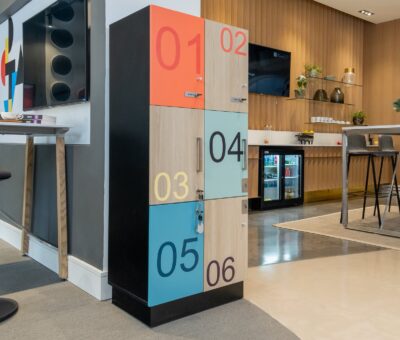Giant Leap: How Science Explains The Popularity of Co-Working
The rapid rise of coworking the world over may just seem fashionable at the moment but there are strong scientific reasons behind its rise in popularity.
“It’s not just a fad, it’s a robust global movement,” said Linda Trim, Director at FutureSpace, a high-end work, ‘pro-working’ space joint venture between Investec Property and workplace specialists Giant Leap which has recently opened its third office in Bryanston such is the demand from established companies, start-ups and independent consultants.
FutureSpace also has two existing offices in Katherine Street and Rivonia Road in Sandton.
Said Trim:”There is a surprisingly strong psychological basis for the growing popularity of share workspaces because of the two basic human needs coworking fulfils – flexibility and autonomy. And it does this without doing away with a meaningful community.”
Trim noted that a team from the University of Michigan Steven M Ross School of Business came to this conclusion after surveying workers from dozens of coworking spaces in the US.
“Interestingly, they also found that while beautifully designed spaces with all offices amenities were certainty important, they were less important than their social structures, where workers feel a sense of individual autonomy that’s still linked to a sense of collaboration.”
Most coworking spaces, for all their idiosyncrasies, tend to strike that careful balance between those crucial needs–in ways that neither solo working nor the traditional office experience usually provide.
Trim added that the research also showed that independence, adaptability, flexibility were also characteristics fundamental human needs. “It isn’t surprising therefore that they have been linked to positive outcomes in the workplace too, from improved performance to higher rates of employee commitment and engagement.”
They also help explain why more companies are embracing flexible work schedules.
But the Michigan researchers found that while the sense of community and autonomy was very important, it went further than that – people were free to be themselves because they didn’t feel that they were competing with those around them as they were in a typical corporate set up. As a result, ideas were more freely shared.
Said Trim: While too much freedom can actually hurt productivity, grafting a community structure onto an already flexible one provides is probably the optimal degree of control.
“Typically, people join coworking spaces because they want to be part of a community while still doing their own thing.”
If more employers follow suit in the months and years ahead, they aren’t just jumping on a trendy bandwagon. “They’re also trying to tap into the science that helps explain what makes people work well–alone and together,” Trim concluded.
For more visit Giant Leap.
You might also like...
-
How Steelcase and Inspiration Office Are Redefining Privacy for Hybrid Work

In today’s fast-moving, tech-driven workplaces, privacy isn’t a luxury – it’s a necessity. As hybrid work reshapes how and where we work, it’s clear that ...
-
The Possibilities of Privacy: Rethinking Workspaces for Wellbeing and Focus

In the evolving landscape of workplace design, privacy has emerged as the number one demand from employees, and with good reason. According to Steelcase research, ...
-
AngelShack: How Smart Office Design Drives Real Productivity

In the evolving landscape of work, the conversation around productivity has shifted. No longer defined by long hours or endless meetings, it now centres ...


























